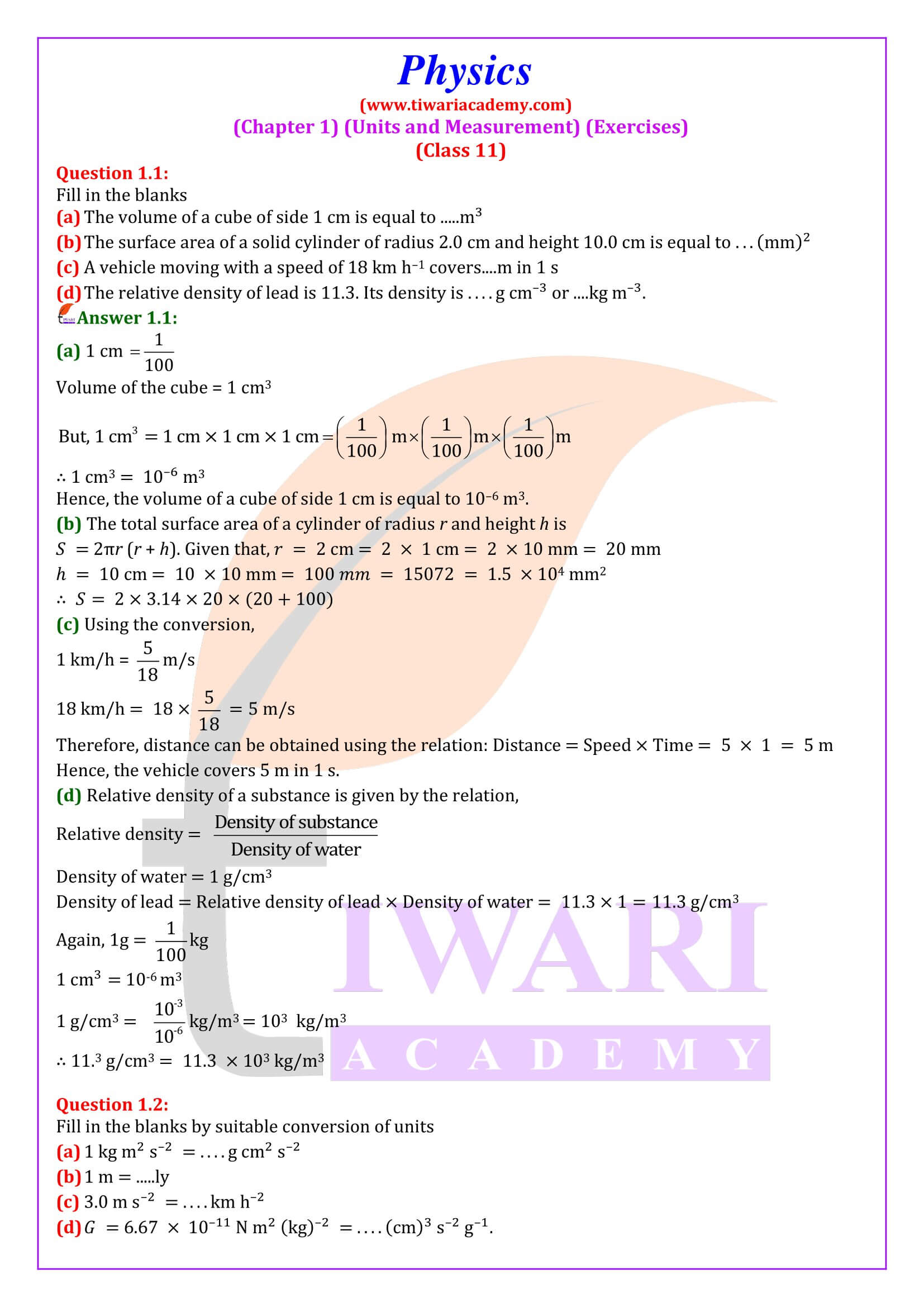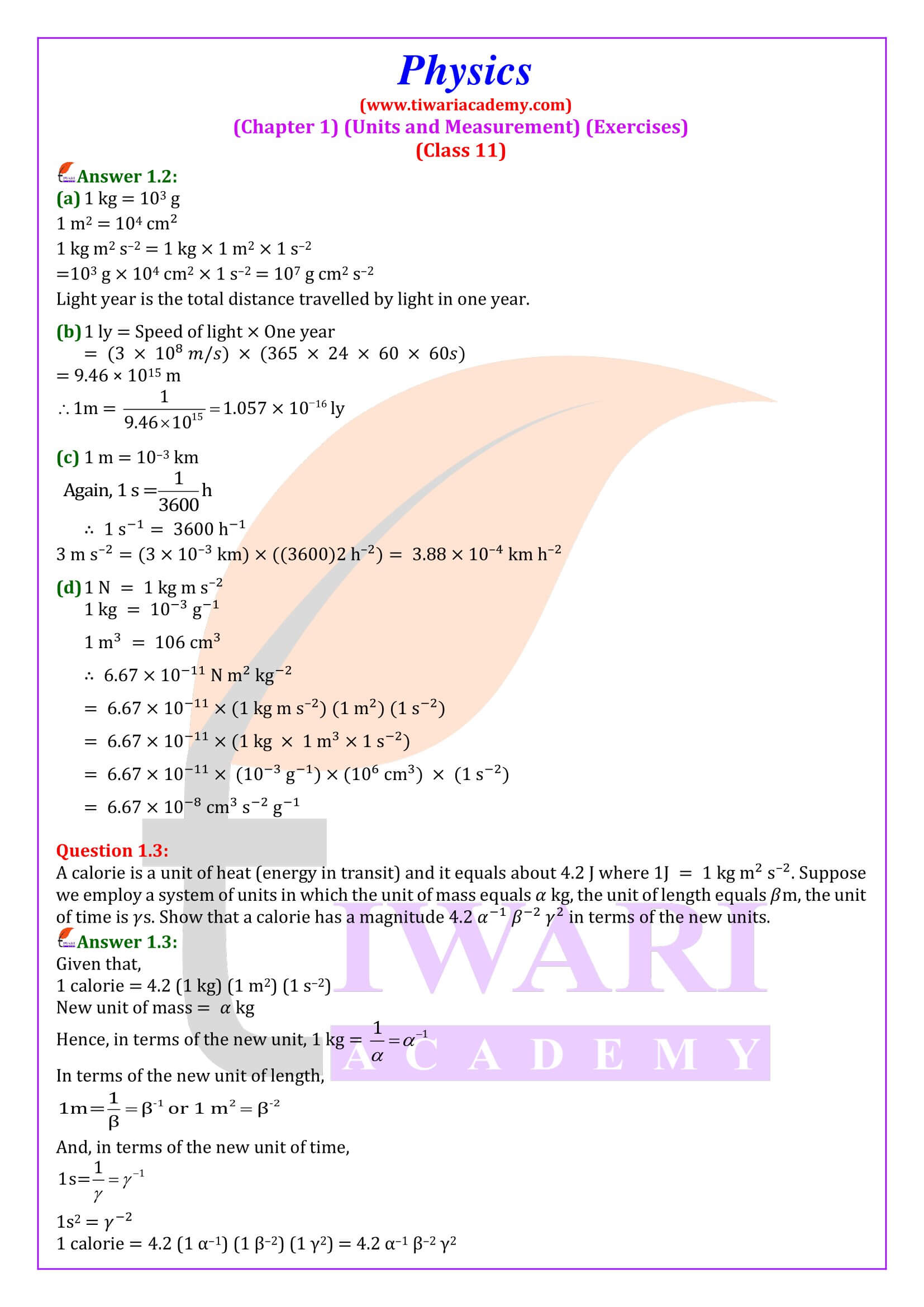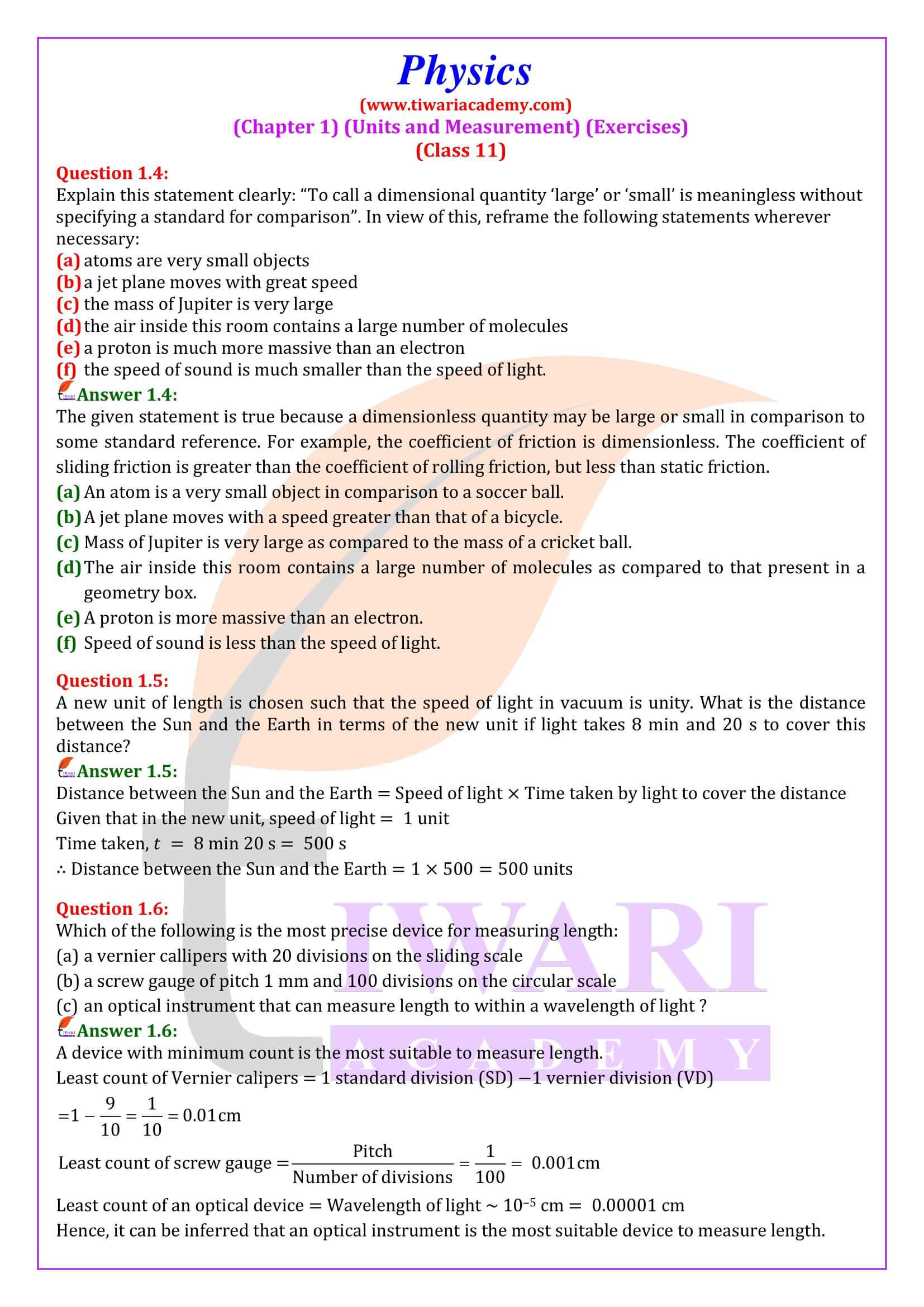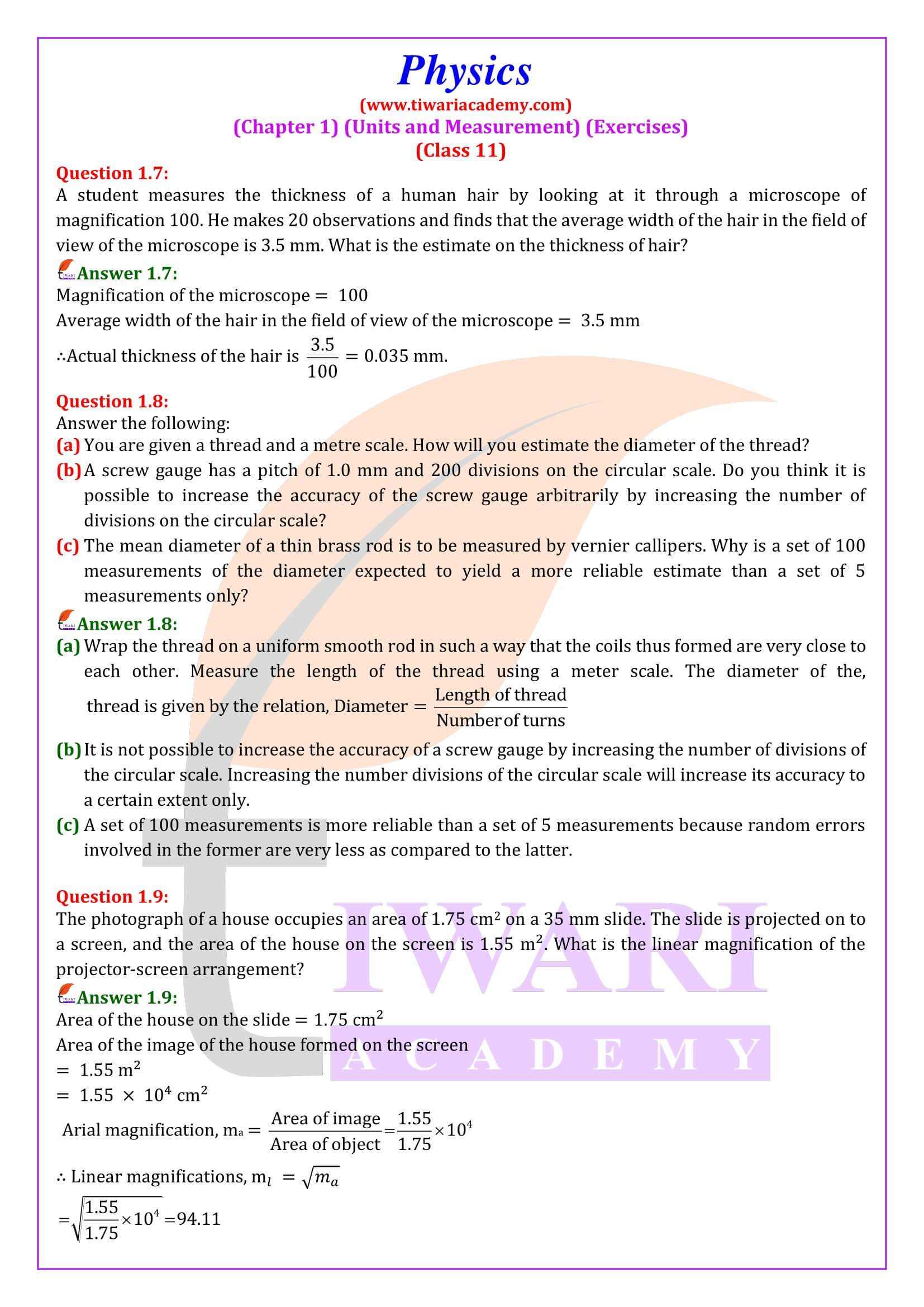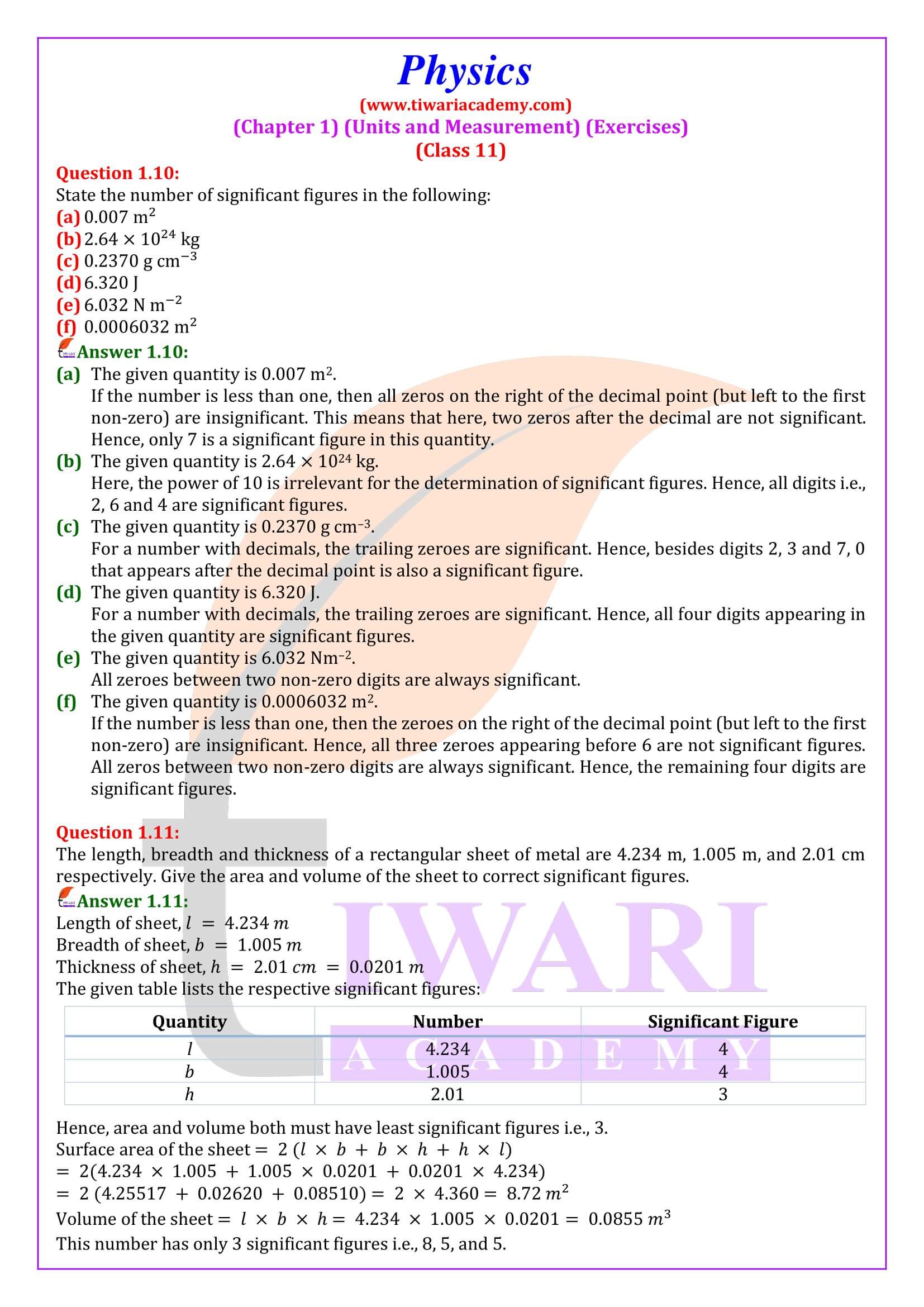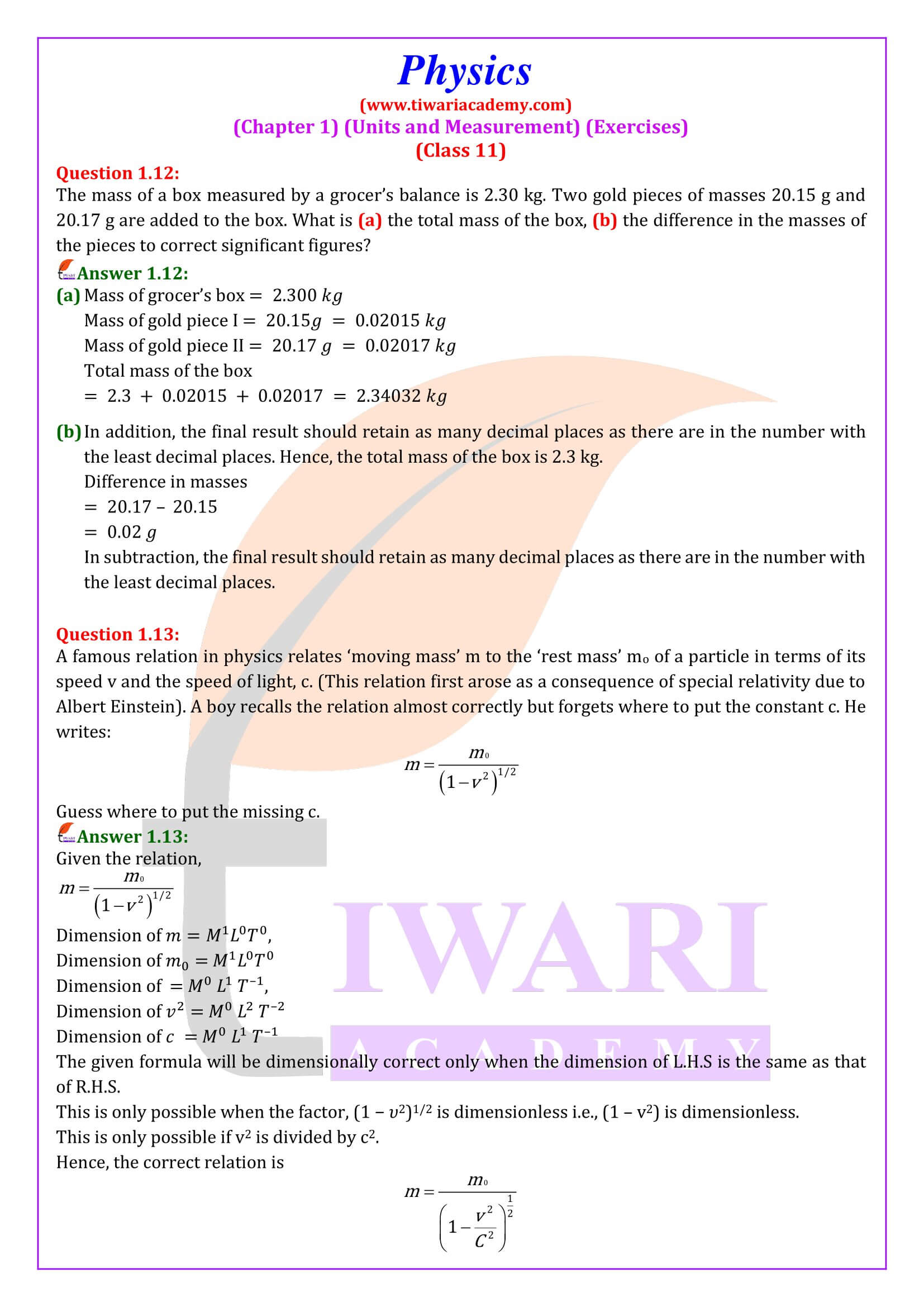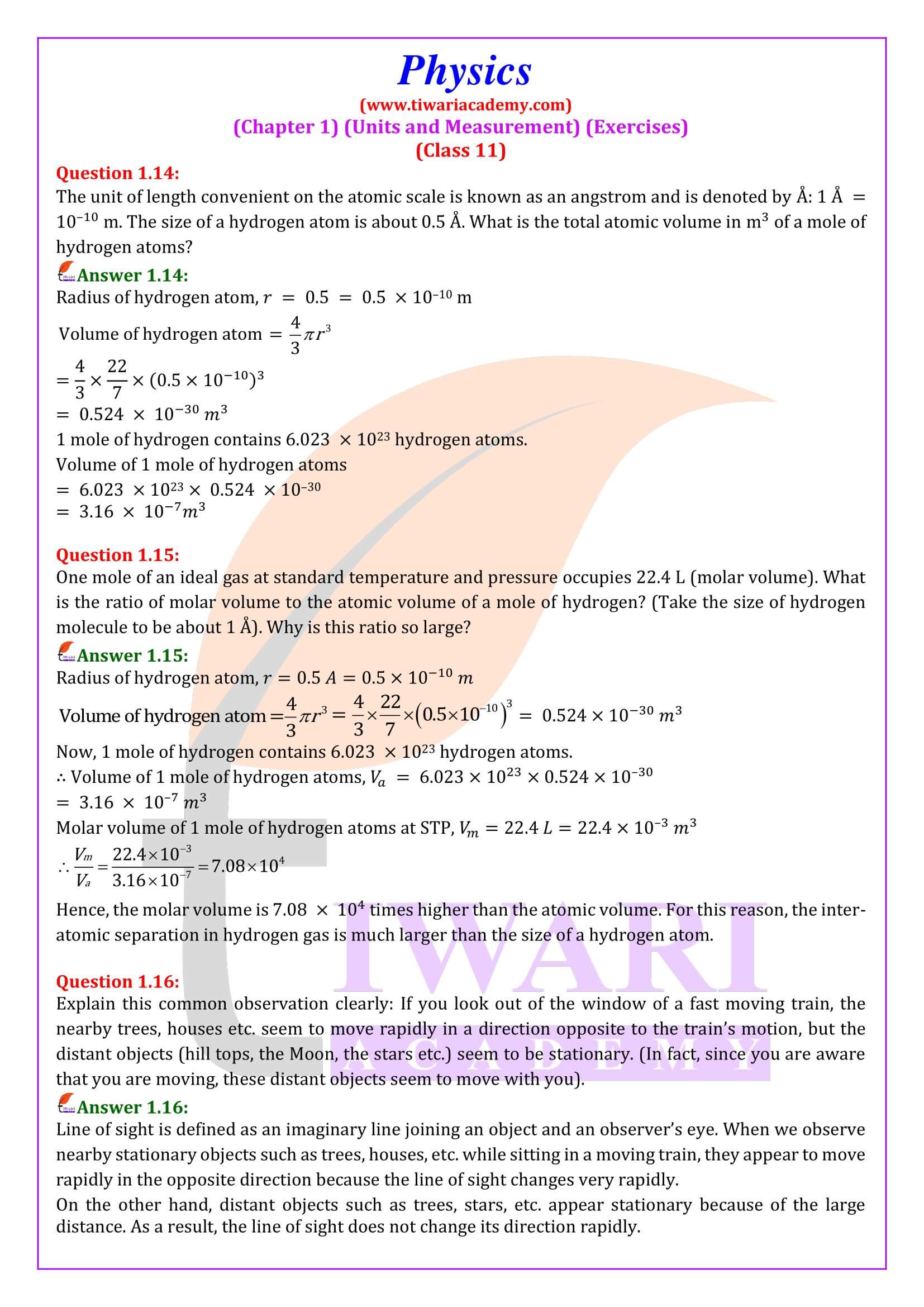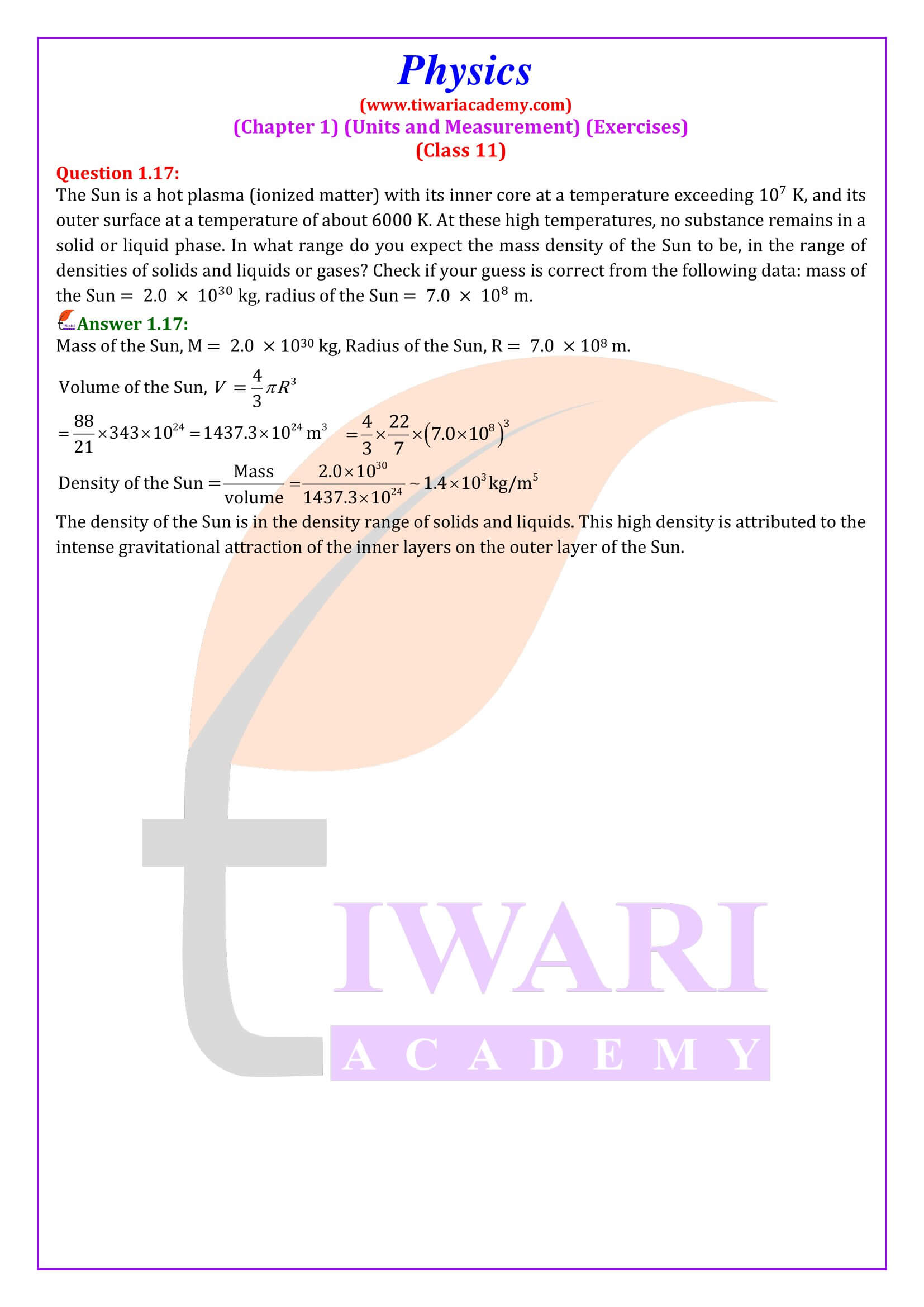NCERT Solutions for Class 11 Physics Chapter 1 Units and Measurements in Hindi and English Medium updated for session 2025-26 with 11th Physics chapter 1 MCQ explanation and answers. Preparing for the important topics in CBSE Class 11 Physics from the NCERT textbook requires a systematic and focused approach. Tiwari Academy provides solutions as well as notes based on chapter 1 of 11th Physics.
Class 11 Physics Chapter 1 Units and Measurements Question Answers
Class 11 Physics Chapter 1 MCQ
Physical quantities are
Which of the following has the same dimensions?
What is the value of SI unit? when the atmospheric pressure is 10⁶ dyne/cm²
Requirement of a Unit System
How many units there are are independent quantities. Take three physical quantities: mass, length and time. These quantities are independent of each other. Therefore, measuring all quantities requires three separate units. Therefore, it becomes important to establish a system of units. Historically, the options for each unit have changed. For example, meters were originally defined in terms of the distance between the North Pole and the equator. This distance is almost equal to 107 m. Until recently, the world standard meter was the distance between two scratches on a platinum-iridium alloy rod, which was kept at the International Bureau of Weights and Measures in France. The number of light wavelengths for the different spectral lines of the Kr-86 isotope has been specified in France.
Class 11 Physics Chapter 1 Multiple Choice Questions
Which one of the following is same as the dimensions of kinetic energy?
Electron volt is a unit of
In SI system the fundamental units are
What is the unit of solid angle?
Concept of Measuring Length
The concept of length involves the comparison of two objects. Suppose we put a rubber string on a standard meter scale. Make it 50 cm long. Now pull the rope from both ends and measure the length. Now take a new length of 60 cm. Since the final reading is greater than the initial reading, the length of the string is said to have increased. Therefore, it proves that the final reading is more than the initial reading. The next unit used to measure very long distances is the distance traveled by light.
Parsec
It’s short for Parallax Seconds. It is the distance of one diagonal astronomical unit of one angular second. In other words, the distance corresponding to one second of parallax per year. The annual parallax 0 is the angle of the semi-major axis of the Earth’s orbit seen from the star perpendicular to the direction of the star.
1 Parsec = 3.26 light years
Is the NCERT solution important for Class 11 Physics Chapter 1?
When preparing for Class 11 Physics Chapter 1, it is just as important to refer to the NCERT solution as to the problem. The answers and explanations are given here in simplified manner. If students cannot answer these questions correctly, it is not enough to read the questions provided in the NCERT. 11 Physics NCERT Solutions Chapter 1 available on Tiwari Academy provides students with correct step by step solutions to all NCERT questions. In this way students do not lose any marks in the exam.
How to understand chapter 1 of the course of physics 11th class?
Chapter 1 of grade 11 NCERT Physics is called Units and Measurements. This chapter details the different units used to determine the measurement of different physical quantities, the instruments used for these measurements and their accuracy, etc. Class 11 Physics chapter 1 is the base of other all the chapters. Students can easily understand chapter 1 by engaging in regular reading of the chapter and solving the problems provided in the exercises and additional exercises. For more help, students can also check out the NCERT Solutions for Class 11 Physics Chapter 1 on website or download the Tiwari Academy app, which is available for free.
What important topics are covered in Chapter 1 of Class 11 Physics?
NCERT Class 11 Physics Solutions Chapter 1 Units and Measurements covers a variety of topics such as the International System of Units, measurement of length, mass and time, application of significant figures, etc. Of these, the most important topics in this chapter include SI units, absolute error, dimensional analysis, and significant figures. Most of the concepts given here can be understand by solving the numerical questions. Short-answer and number-based questions can be asked on the topic of evaluating errors in quantitative measurement processes.
